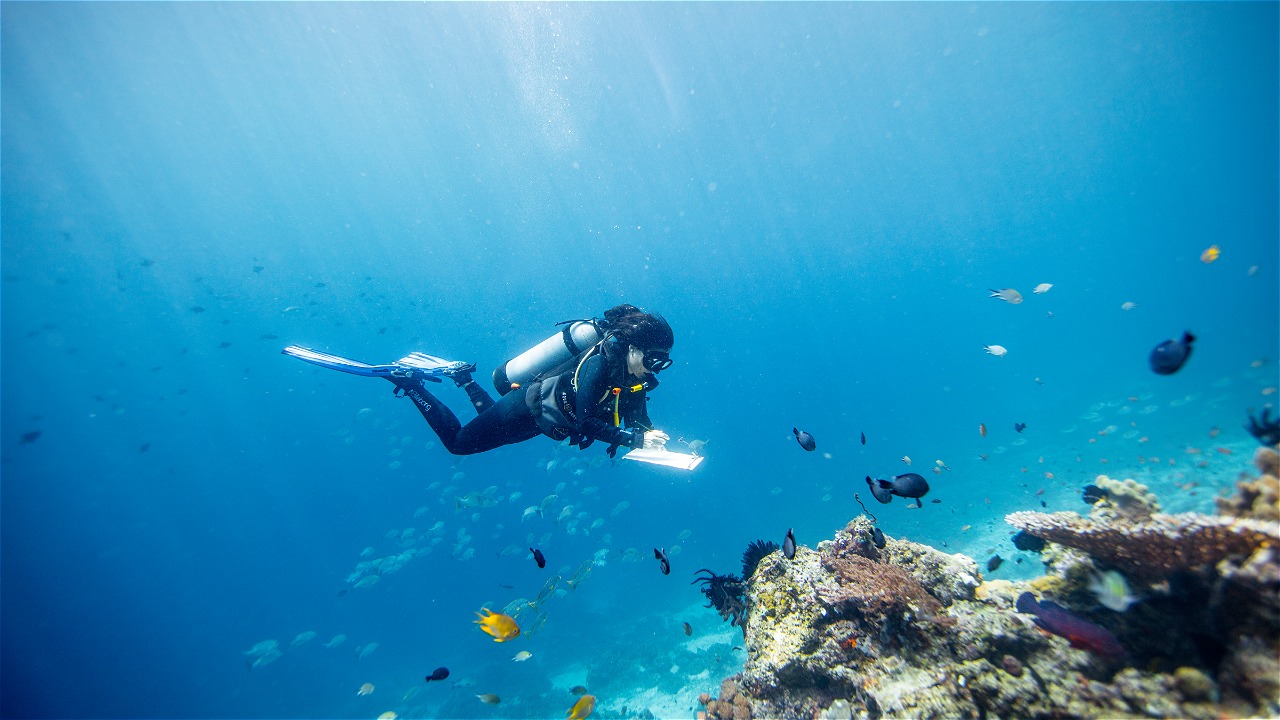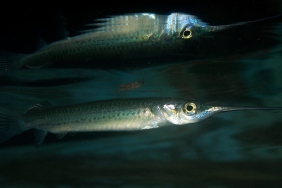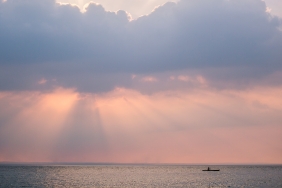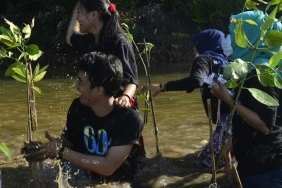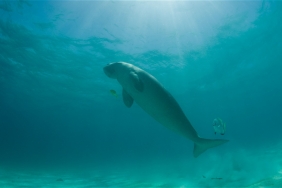UNDERSTANDING HOW MARINE SCIENTISTS WORK
By: Nisa Syahidah (WWF-Indonesia)
Before going on the expedition, I knew nothing about the Point Intercept Transect (PIT) and Underwater Visual Census (UVC) methods. Understandably, my background is in advertising, not fisheries. This one letter "L" difference makes me curious about how exactly the marine researchers will work on this expedition.
My confusion was answered through a workshop on the first day of the expedition. I absorbed as much foreign vocabulary as I could, until I finally felt cool enough to write a blog with PIT and UVC in the opening paragraph. Hehe.
In the 39 dive sites on this expedition, the ecology team was divided into two teams, each of which would dive three sites each day. At each point, divers had to take site characteristics, benthic (coral reef) communities, and reef fish communities.
Site characteristics are details about where the data was taken, from GPS position, depth, brightness level in the water, reef type and slope, current, to the name of the observer who went down.
The dive team consists of at least four people who dive sequentially at a depth of about 10 meters. There will be a diver acting as roll master in the center, and will lay out 5 transect tapes, each 50 cm long.
Behind the roll master, there will be benthic observers, who will record the growth form of live corals at every 0.5 point of the tape, for up to 3 transects. This is what is called the PIT method of yesteryear.
The front two divers are fish observers who record data on small and large fish according to the UVC method. That is, they must identify species of small fish (10-35 cm) and large fish (above 35 cm) belonging to the 16 target fish families, both herbivorous and carnivorous.
Fish observers will record small fish present in a wide area of the transect (2.5 meters to the right and left of the observer for small fish, and 10 meters on each side of the observer for large fish).
After observation with the UVC method, the two buddies will do a long swim for 15 minutes or approximately 300 meters. Later, the roll master will roll transects 5 and 4, and swim with the benthic observer waiting at the end of transect 3 to return to point 0.
There are three red dive sausages marked "Diver Below" that will float at point 0, the end of transect 5, and at the end of the long swim. It is there that the boat will return to transport the divers.
To do all that, benthic observers must memorize more than 30 coral growth forms, complete with initials. Fish observers, even more homework. There are two 5-cm-thick books in our workshop room at Menami. They contain a list of reef fish species that, if the location of the black dot on the body is different, then the species name is different.
Not only that, they also had to estimate the length of the fish. There were three Fish Tests and Coral Tests that day, including fish identification and length estimation. Funnily enough, this part - the estimation of fish length - was the only part of the training that I was able to master.
The rest of the time, out of the hundreds of pictures of fish and coral that popped up on the screen, I chose to just draw them. Because that's how the Communication kid works.

